Aesthetics 美育
Aesthetics Department
The Aesthetics Department strives to spark curiosity and creativity in students, developing and enhancing their artistic skills through our diverse Arts programme. We engage in a multimodal world of Visual Arts, Music and Dance enrichment lessons - conducted during Lower Secondary CnMe lessons. Our Assembly Programme highlights innovative ideas, using sustainable practices to create artworks and instil in students the concept of resourcefulness. Lower Secondary students celebrate their learning and enjoy enriching aesthetics programmes through our Annual Arts Appreciation and ArtsFest at the end of the year.
The Lower Secondary Music curriculum utilizes well-founded pedagogical methods to motivate students to achieve instrumental mastery and performance competency. Secondary 1 students learn music theory through ICT online platforms and hands-on lessons with musical instruments. An Arrangement module, involving GarageBand on the iPad, allows students to develop their musical abilities through technology. Secondary 2 students deepened their musical knowledge through the learning of music from different cultures and genres.
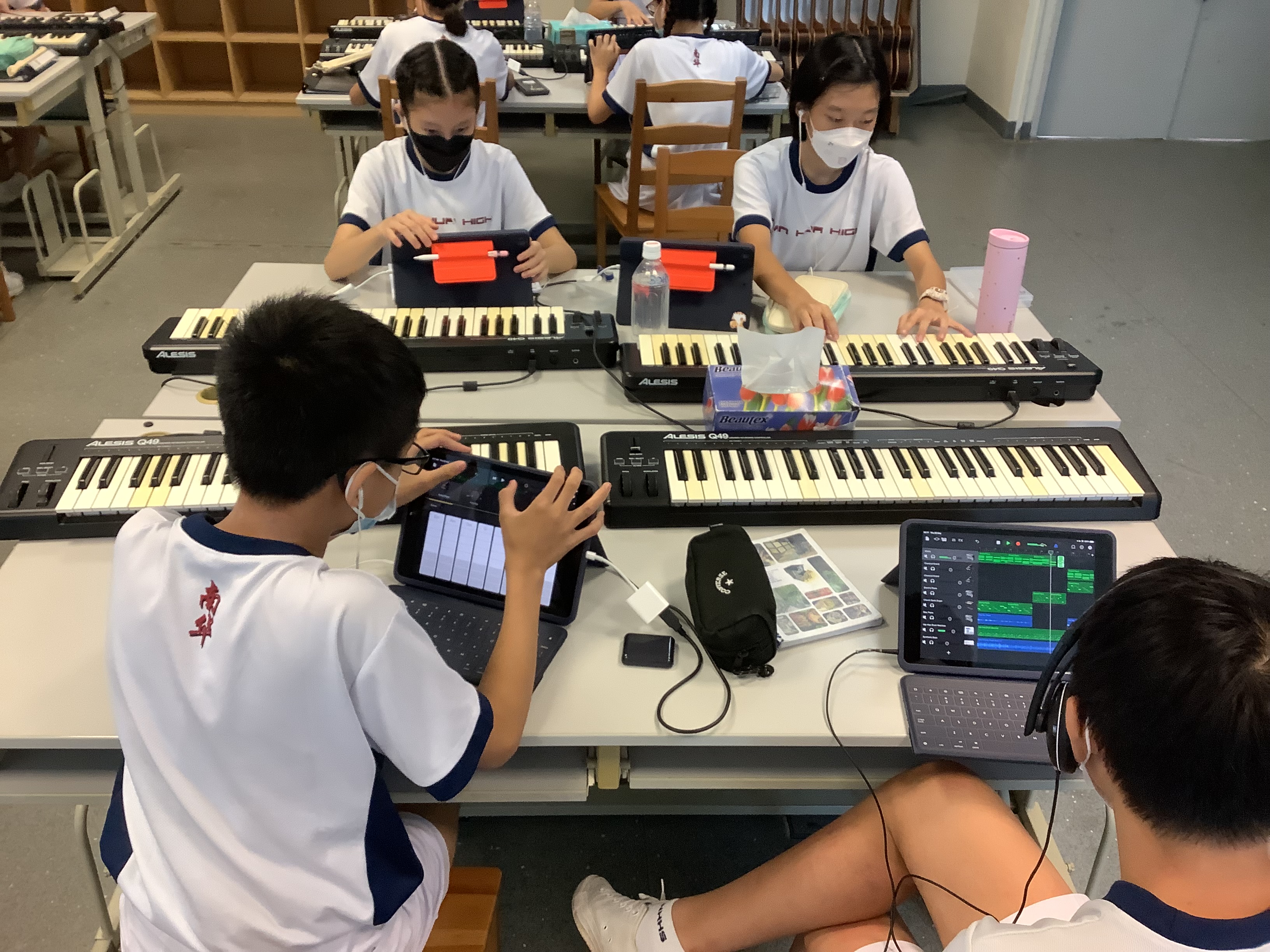
Secondary 1 students creating music using GarageBand
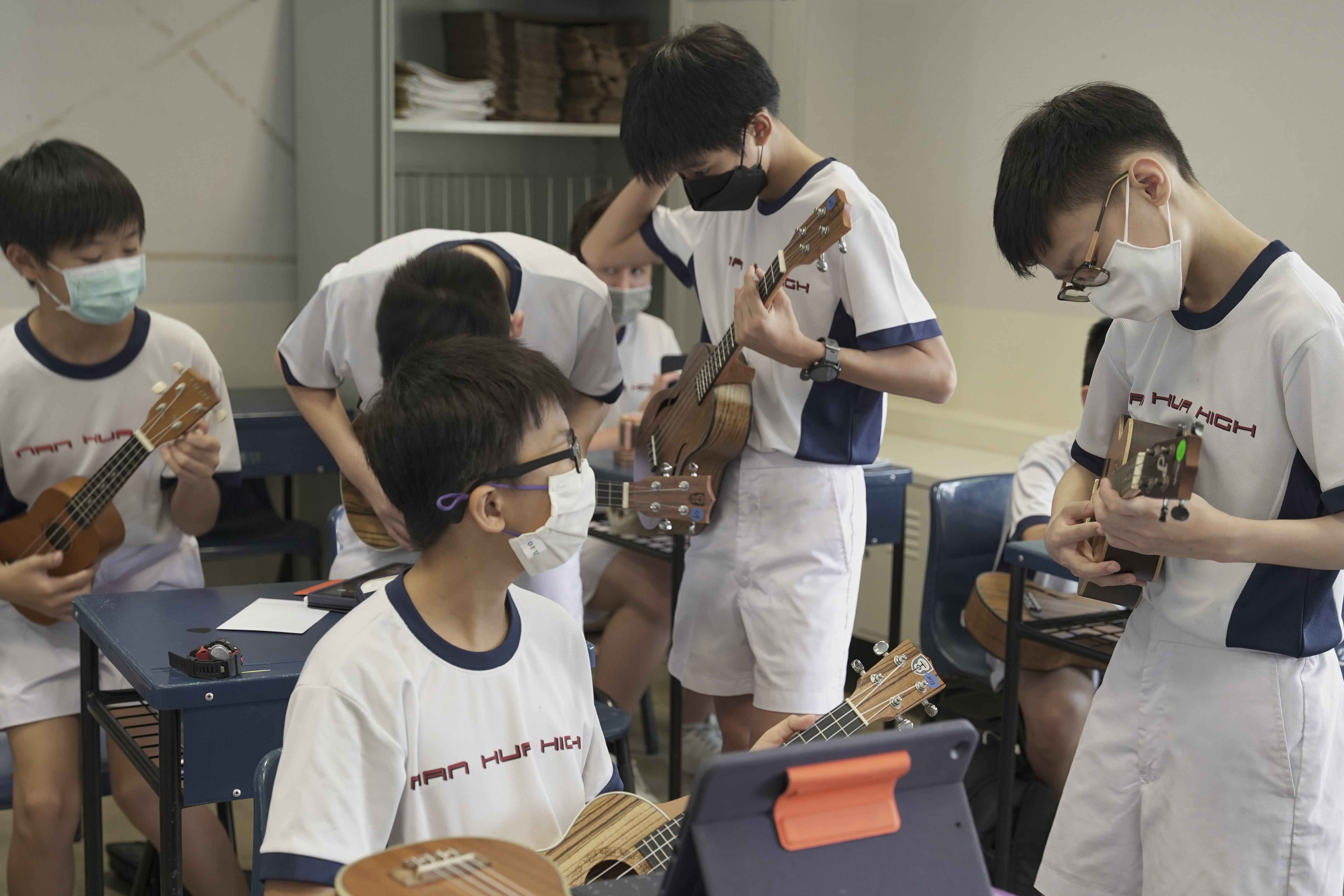
Secondary 1 students playing the ukelele during AAA Music module
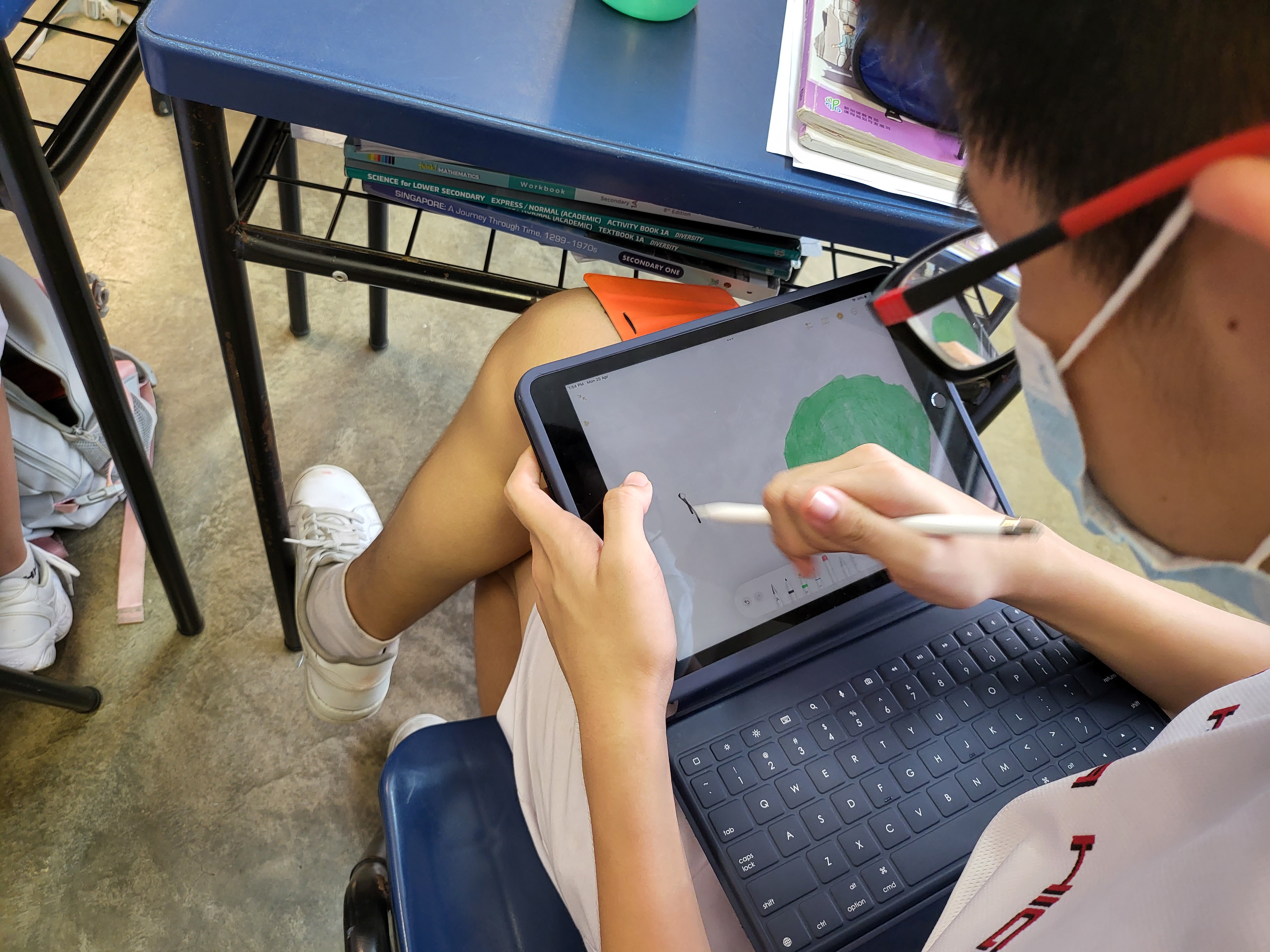
Secondary 1 student expressing thoughts and emotions on a music piece through drawing
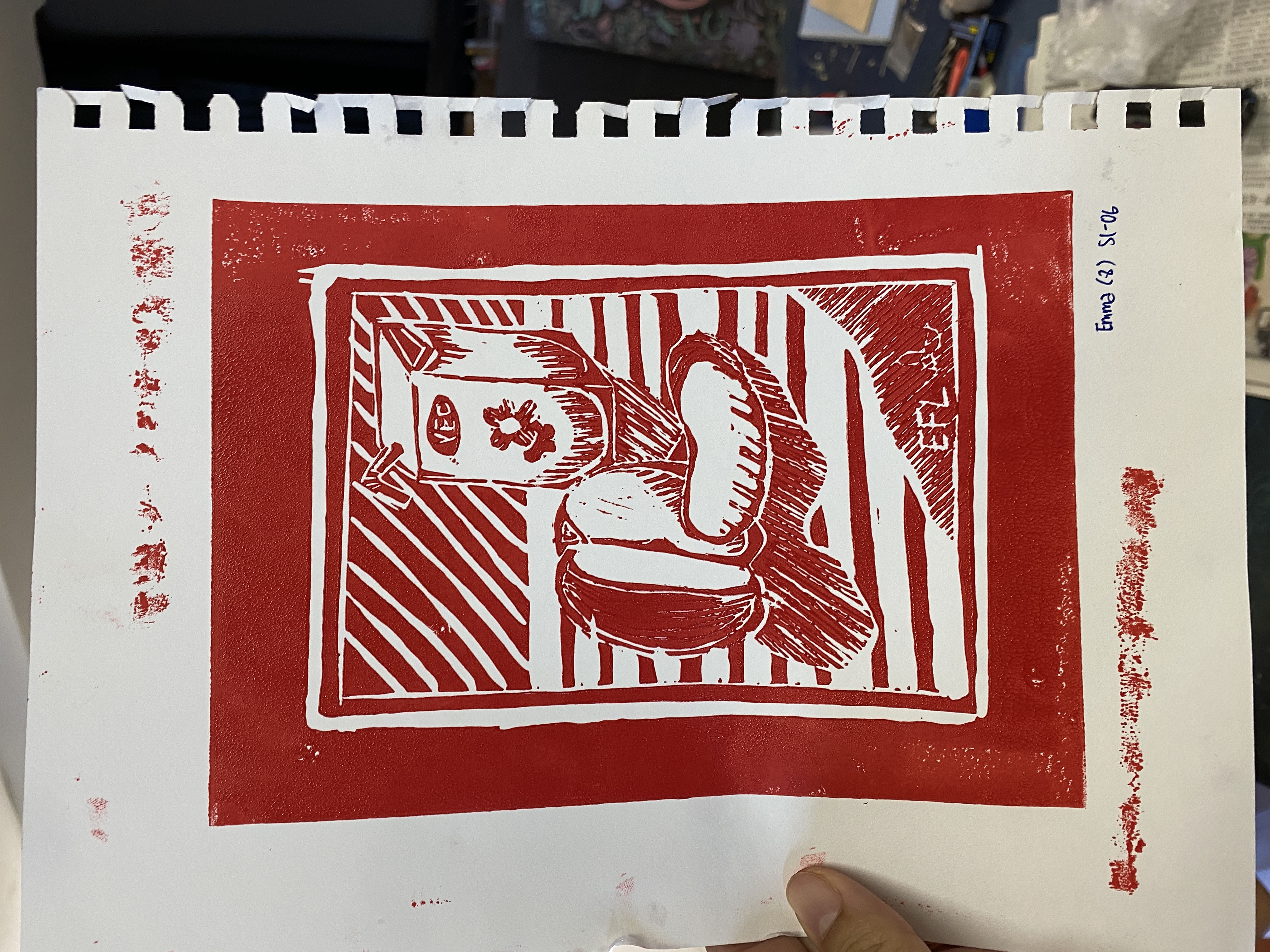
Secondary 1 Lino print
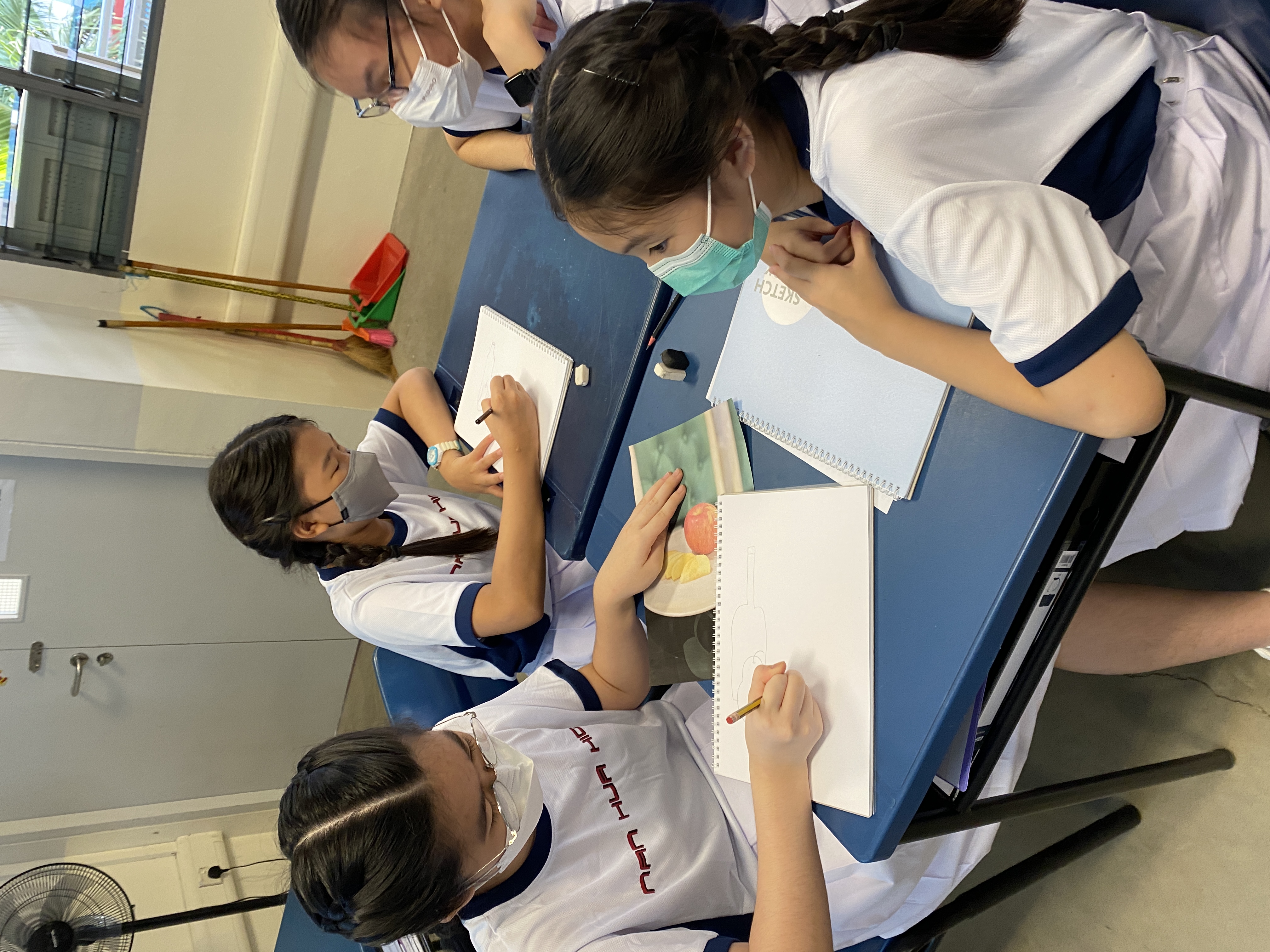
Secondary 1 students drawing based on verbal descriptions in pair-work activity
Using the Gradual Release of Responsibility (GRR) and Inquiry-Based Learning approach, our Art programme aims to develop students’ creative thinking and craftsmanship through project-based assignments. The Lower Secondary Art programme seeks to expose students to various art forms and empower them with the confidence to express themselves through Visual Art forms. Critical appreciation also forms the bedrock of the programe, as students learn to appreciate artwork. The Higher Art Programme allows students to further develop their artistic skills in both 2D and 3D mediums and provides opportunities for students to develop their artistic voice.
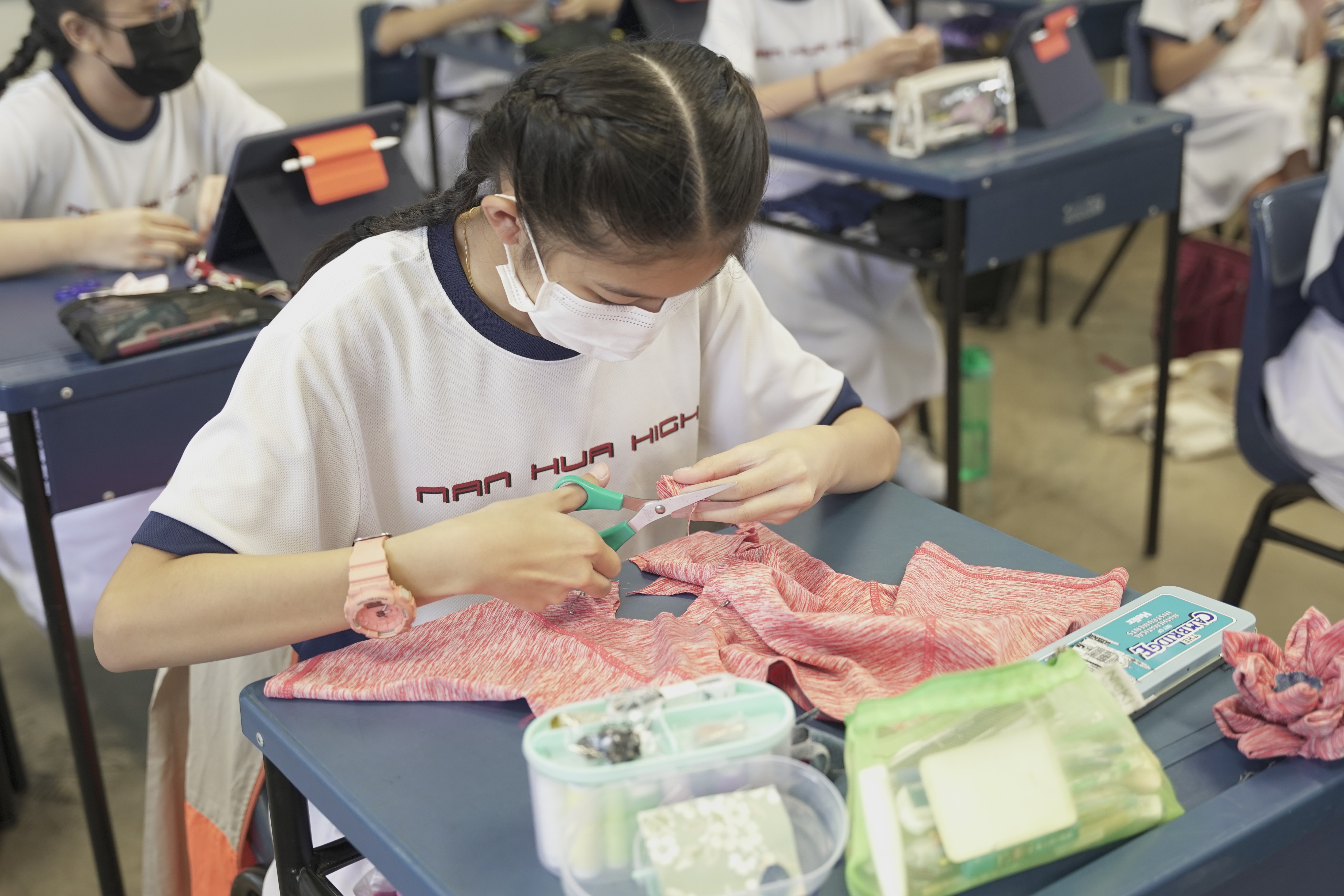
Secondary 2 student creating fabric flowers during AAA FCE module
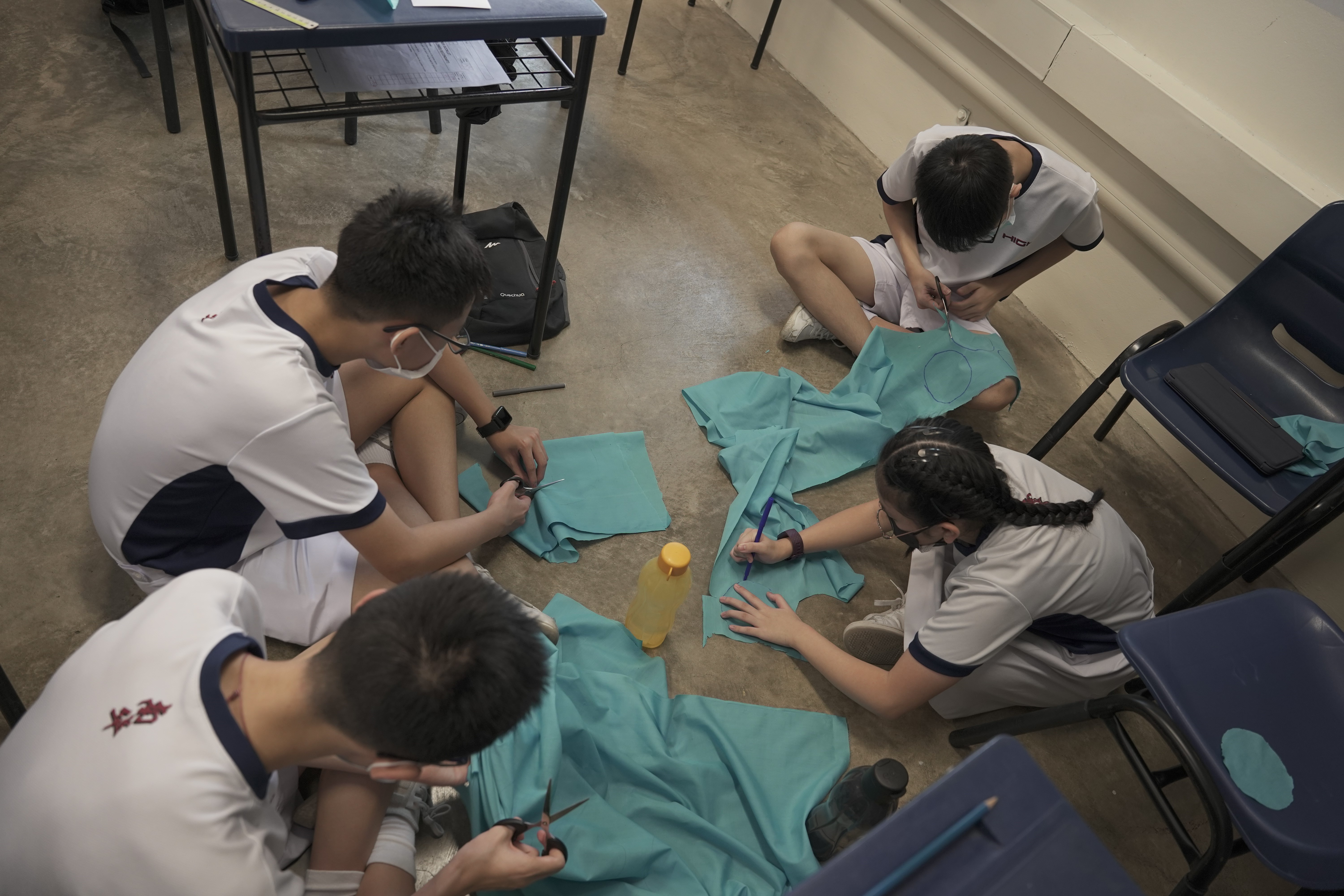
Secondary 2 students cutting recycled fabrics to create fabric flowers
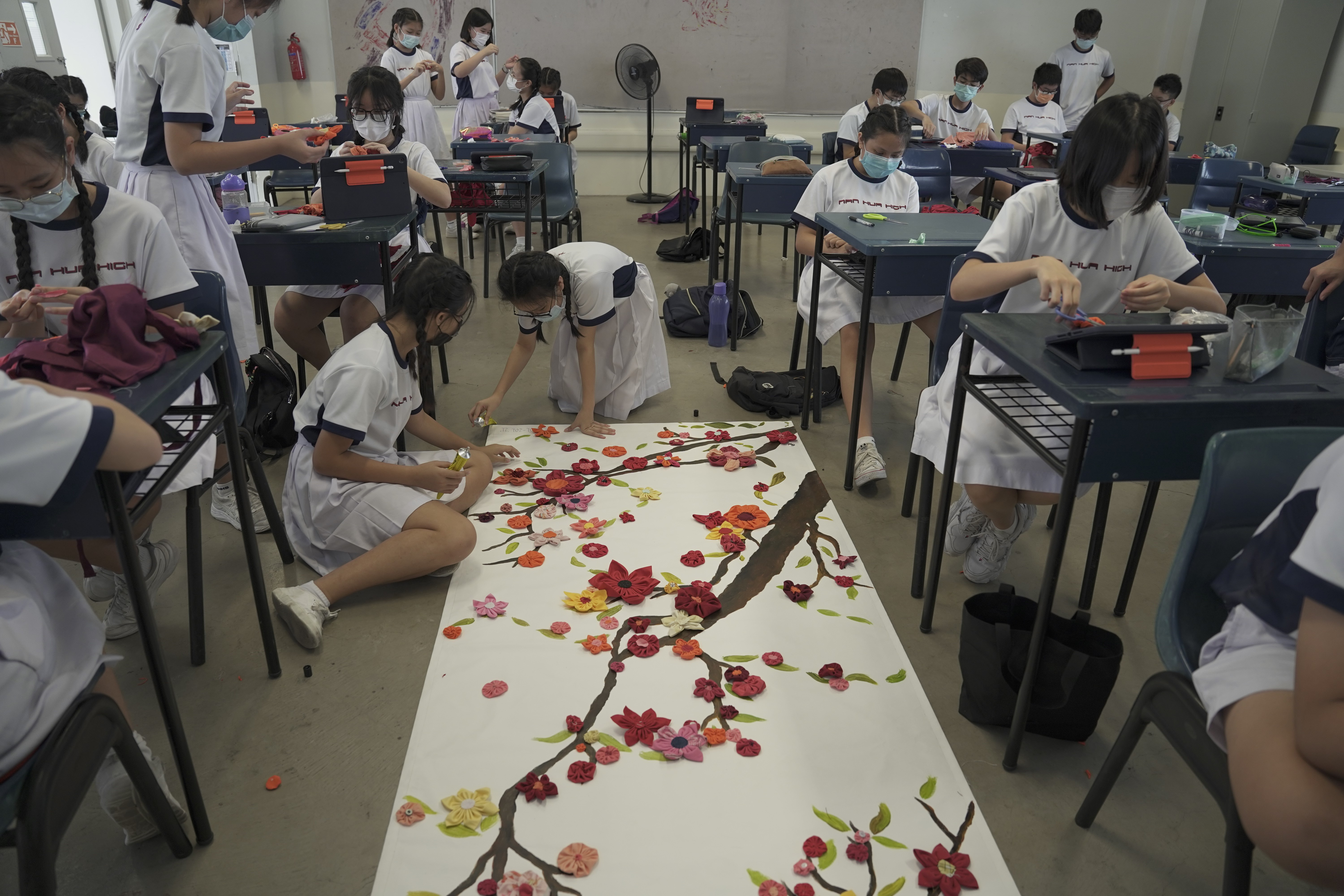
Secondary 2 students placing fabric flowers on canvas for Artsfest
The Design & Technology (D&T) unit engages the Secondary 2 students through Design Thinking Process as they learn to manage their own projects aiming at improving real-life situations. Being new to D&T and having little experience with handling the equipment and tools, the students were guided using the Gradual Release of Responsibility (GRR) model. As they progress, students gain experience and develop confidence in tackling problems and designing functional products. With Empathy guiding their hands and hearts, the students strive to create responsibly while making their designs relevant and useful.
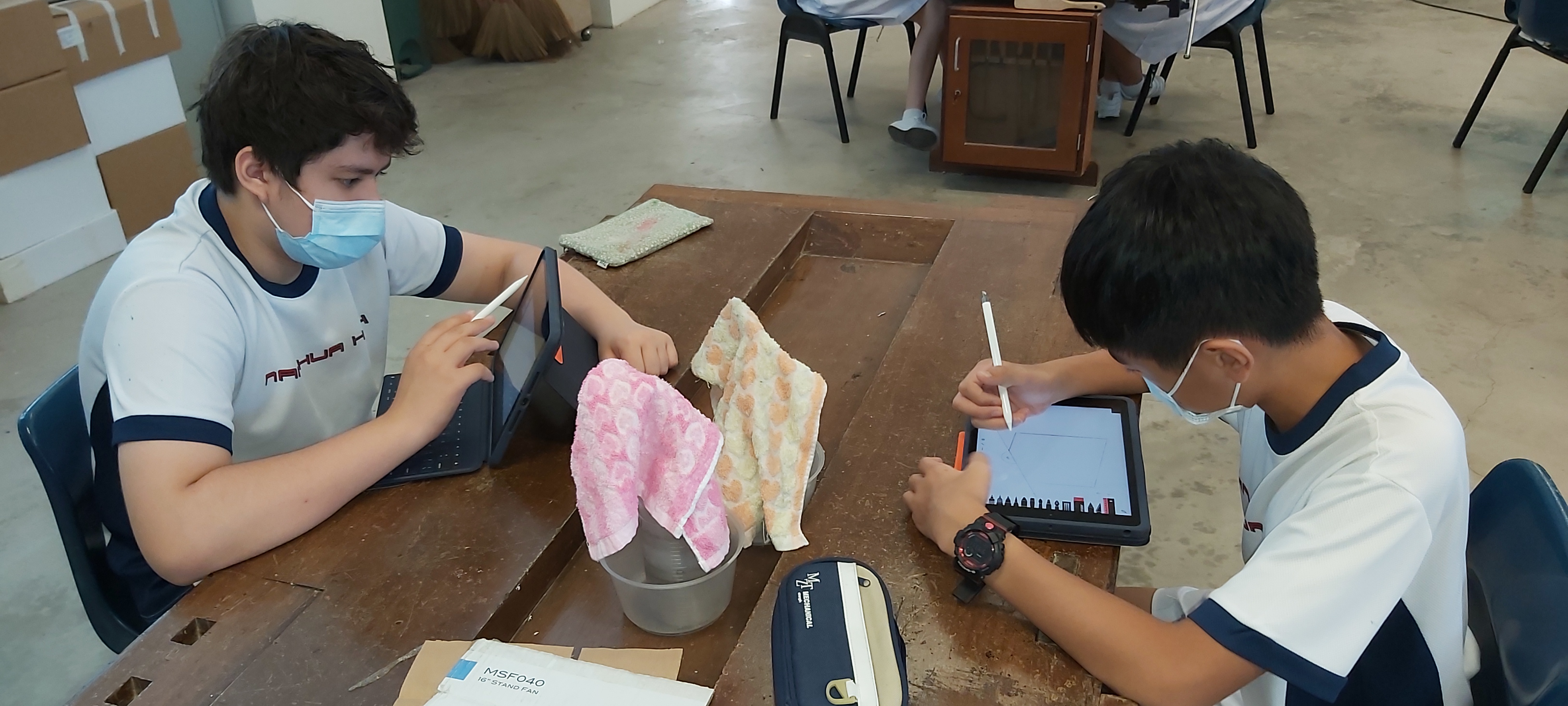
Designers at work
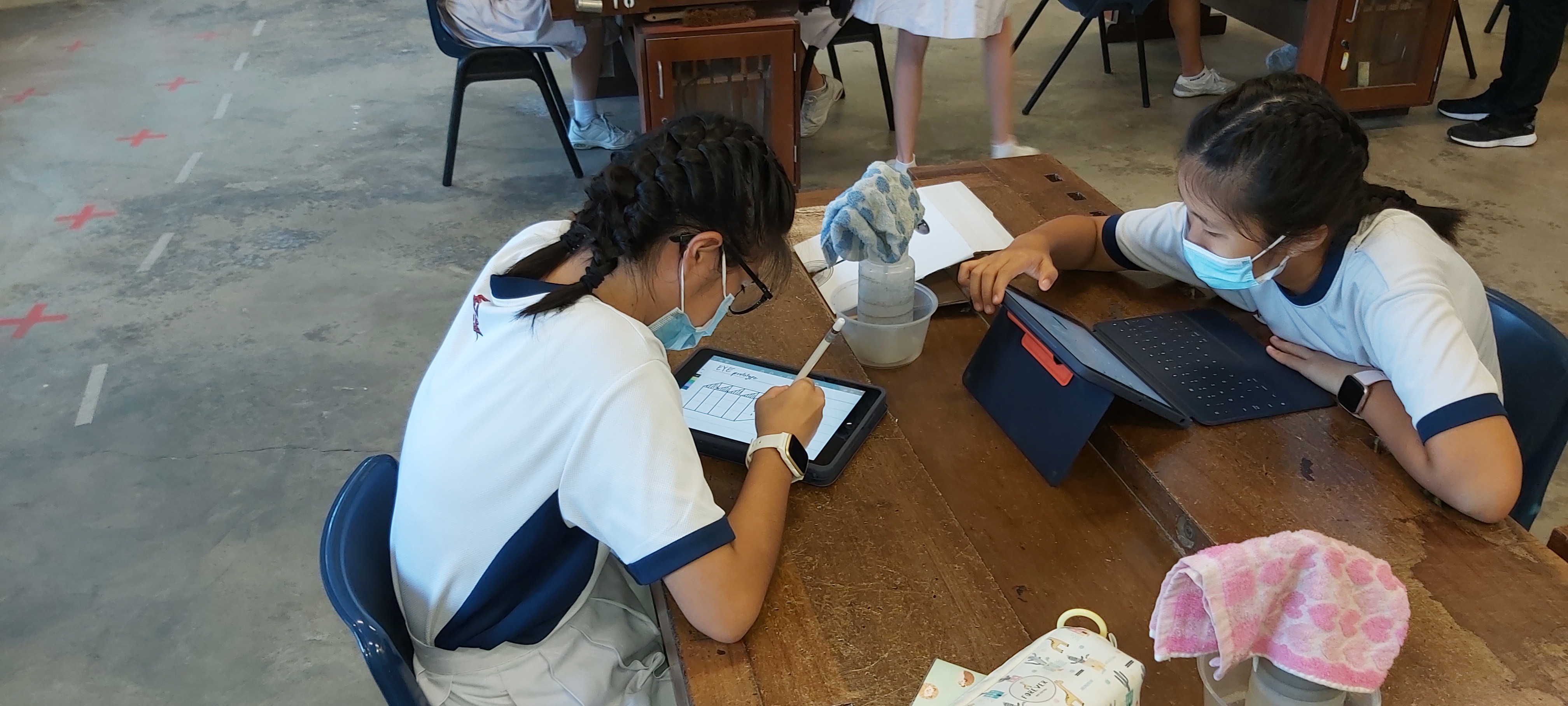
Doing design work for D&T on the iPad
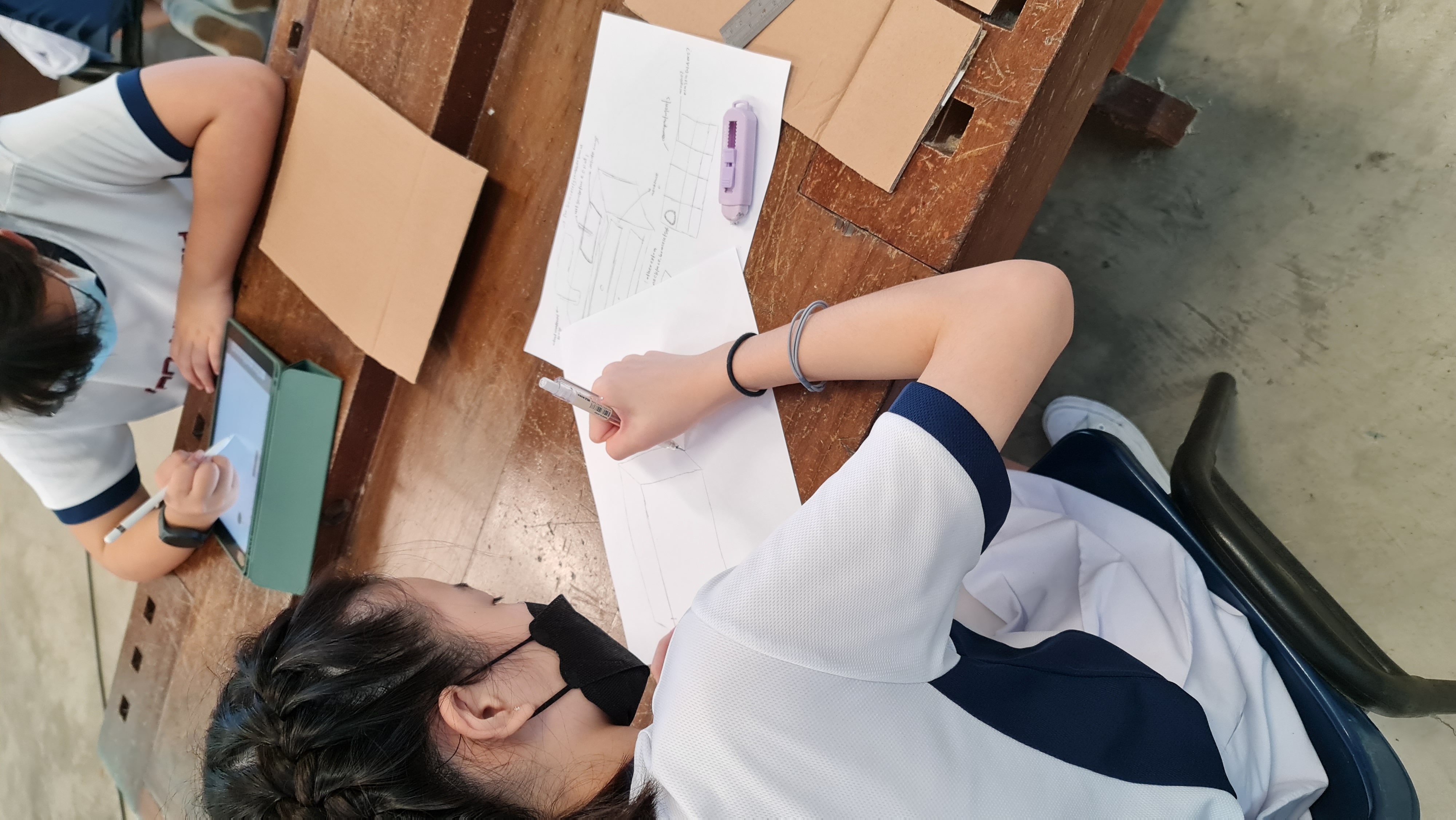
Design Thinking in progress
Food & Consumer Education place much emphasis on authentic and practical learning experiences through exploration of nutrition and health, diet-related diseases, and the impact of sustainable consumption on our lives. Students engaged in robust discussion on food and resource-management topics as well as consumer issues. Inquiry-Based Learning and discourse through Dialogic Talk - enhanced through active use of ICT tools and platforms - helped them develop greater literacy in the subject.
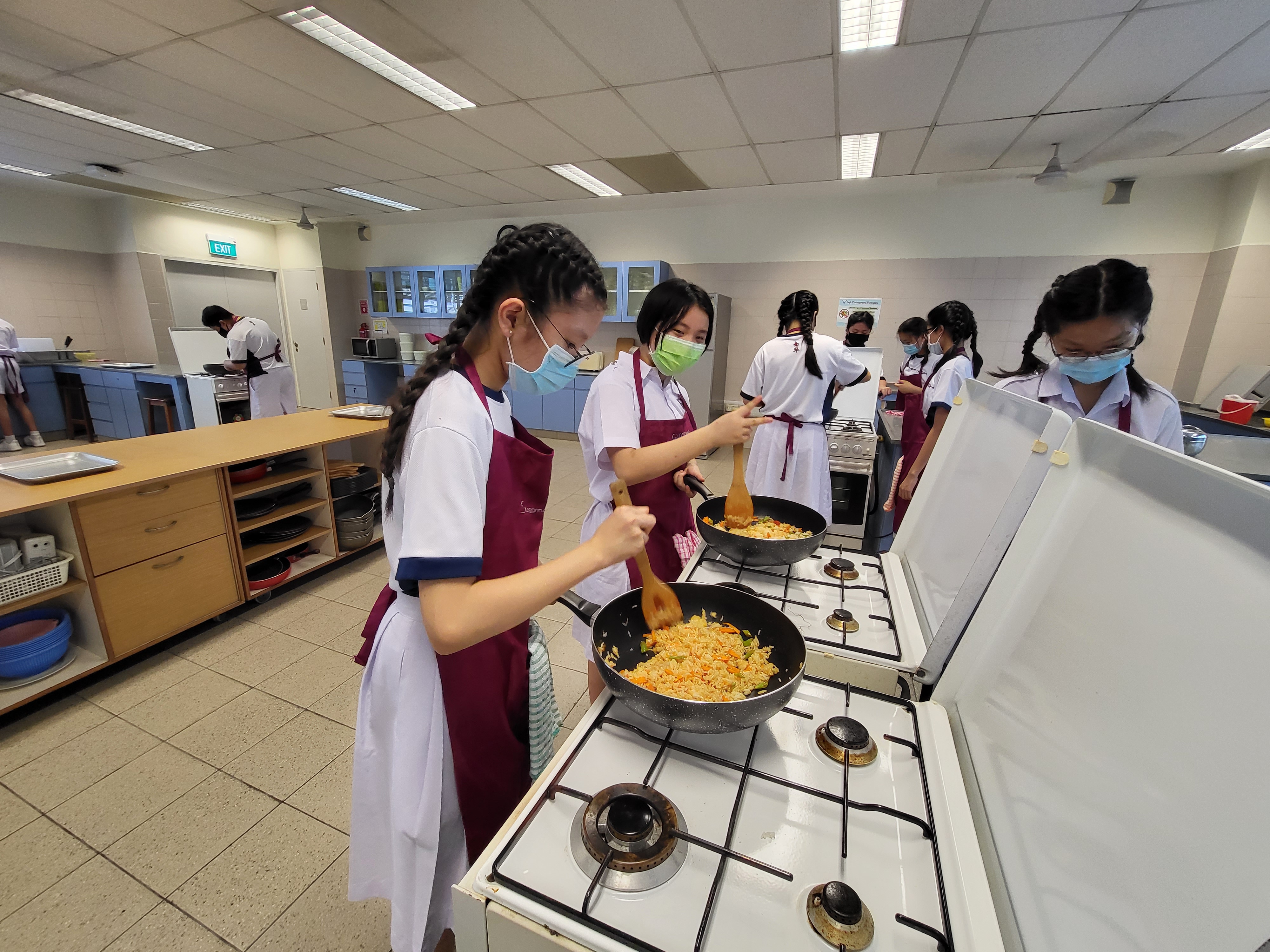
Cooking Fried Rice in an FCE practical lesson
Albert Einstein once said : “Art is the expression of the profoundest thoughts in the simplest way.” Our Art programmes offer a spectrum of opportunities for our students to blossom into open-minded champions of society, raising awareness and soaring positively. We aim to recognise our students’ potential and creativity to the maximum extent for them to acquire the necessary skills to build their own future humbly and confidently.

